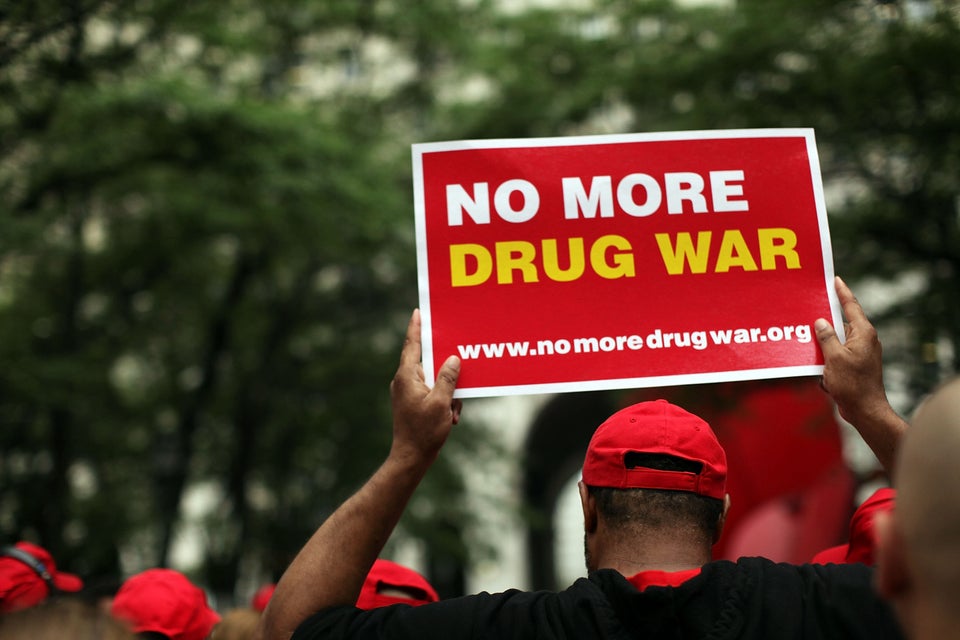
In a move that should surprise few, recently inaugurated Puerto Rico Gov. Alejandro Garcia Padilla has activated the National Guard to help fight drug and weapons trafficking on the island.
The announcement came last week, just two days after his inauguration.
As the Associated Press reported, this is Garcia Padilla’s first executive order. The plan to put the National Guard to work in this manner had been on the governor’s platform from the start.
When he first presented the proposal during his campaign, the governor said that, in the past, the National Guard had been used ineffectively, but the plan this time was to right those wrongs.
“As a national security issue, we will activate the National Guard intelligently so they are present in seaports and airports, working to interdict the offering of drugs and illegal weapons in Puerto Rico,” Garcia Padilla said last year.
A plague upon the Caribbean
Puerto Rico has often been called the United States’ third border, and drug smuggling is a huge issue on the island. In 2011, an estimate by an economist at the University of Puerto Rico’s Mayaguez campus indicated that $9 billion in drug trafficking activities may have been contributing to 20 percent of Puerto Rico’s Gross Domestic Product (GDP).
But this is not a problem that only affects Puerto Rico—the trafficking problem extends to the Dominican Republic and other Caribbean nations as well.
The Caribbean has become big hub for drugs going to both Europe and the United States. A seminar held last month in Punta Cana, Dominican Republic, concluded that one of the reasons cocaine trafficking through the Caribbean has skyrocketed—increasing 800 percent in the last two years—is the lack of technology in ports, such as the Multimodal Caucedo Port and the Port of Haina, both located in the Dominican Republic.
The seminar also concluded that maritime cocaine trafficking is an extremely important modality of international trafficking in this narcotic.
Trying something a bit different
Though the National Guard has been called to the task in Puerto Rico before, this time, according to National Guard spokesman Maj. Paul Dahlen, they will be working behind the scenes, providing technical support to airports and seaports, the AP wrote. Before, they were armed and could be seen by the public.
The last time this happened was in February 2010, when then Gov. Luis Fortuno activated them for a year.
The high levels of crime in the island are greatly tied to drug trafficking, and the statistics rival those of Mexico. The United Nations’ Office on Drug and Crime said that in 2011, there were 26 homicides for every 100,000 Puerto Ricans vs. 18 for every 100,000 Mexicans.
In Puerto Rico, even members of the state legislature have been accused of trafficking, which shows the problem is grave. In addition, over the summer, the Drug Enforcement Administration (DEA) made about 33 arrests in Luis Munoz Marin International Airport, Puerto Rico’s most important airport. Those arrested were suspected of smuggling millions of dollars’ worth in drugs aboard commercial flights.
But as the seminar held in Punta Cana, Dominican Republic noted, drug traffickers prefer to transport their product though sea routes.
It was suggested then that it would be advisable to increase international maritime cooperation in order to try to decrease illegal sea trafficking in cocaine, highlighting, in this respect, implementation of article 17 of the 1988 UN Convention.
The fact that both the Dominican Republic and Puerto Rico are struggling with the detection of illegal items entering their shores is a dangerous indication that the Caribbean is a great gateway for the distribution of drugs and that assistance is needed, like Fortuno and Puerto Rico Resident Commissioner Pedro Pierluisi had been asking the United States for years before.
In June, Fortuño met with the DEA’s chief of operations and the director of the DEA in Puerto Rico, and they discussed the need for more security in the ports of Puerto Rico, since the majority of drugs that go into the island end up in the United States. Back then he said he would ask the pertinent agencies to pay more attention to the “Caribbean frontier,” as Puerto Rican newspaper El Nuevo Dia wrote.
In the Dominican Republic, Marino Vinicio Castillo—advisor to the Executive Branch on drugs—said during the seminar that increasing technological resources is important to prevent the statistics from increasing and being able to better monitor the border. U.S. Ambassador to the Dominican Republic Raul Yzaguirre recently called for more controls in ports as well and said that the United States is doing all it can to prevent drugs from flowing through.
Originally published in Voxxi as Puerto Rico Governor Activates The National Guard To Fight Drug Trafficking
